- Why I Love Hebes for Any-Sized Garden?
- How Big Do Hebes Grow in the UK?
- What Is The Average Hebe Plant Size by Type?
- How Is the Small, Medium, and Large Hebes Looks?
- Do Hebes Grow Tall or Stay Bushy?
- How Is The Popular Hebes Varieties in Height, Spread, Growth Rate?
- How Fast Do Hebes Grow?
- What Affects Hebe Growth Rate?
- How I Choose the Right Hebe Size for My Space?
- What Are Quick Sizing & Spacing Tips for Hebes?
- Can I Control How Big My Hebe Grows?
- Final Thoughts: Big or Small, Hebes Always Fit the Garden
- What Are The FAQs On How Big Do Hebes Grow?
Over the years, I’ve grown hebes in all sorts of spaces — from tiny patios to sprawling country borders.
If you’ve ever wondered, how big do hebes grow?, you’re not alone. It’s a common question, especially since hebes come in such a wide range of shapes and sizes.
In this guide, I’ll walk you through everything I’ve learned about hebe plant sizes, how quickly they grow, and how to choose the right one for your garden — whether you’re working with a few pots or planning a low-maintenance hedge.
Why I Love Hebes for Any-Sized Garden?
One of the first things that drew me to hebes is their versatility. These evergreen shrubs aren’t just pretty — they’re practical.
- In smaller gardens, I love using compact hebes like ‘Red Edge’ in pots or front borders.
- In larger spaces, taller varieties like ‘Great Orme’ create structure without overwhelming the design.
- No matter the size, hebes bring year-round greenery and pops of colour in summer or early autumn.
Because they grow slowly and don’t need much fuss, hebes are also ideal if you want something low maintenance but still visually rewarding.
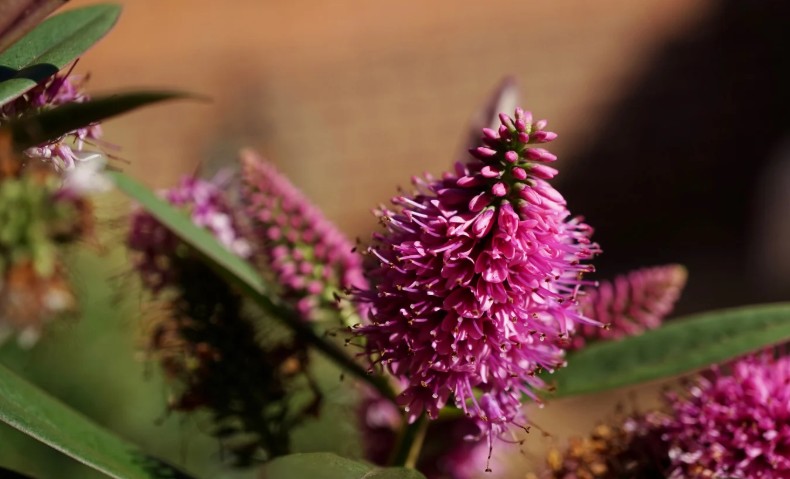
How Big Do Hebes Grow in the UK?
In the UK, most hebes will grow anywhere between 30 cm to 2 metres tall, depending on the variety. Some stay small and compact for years, while others can become substantial, rounded shrubs if left unpruned.
What Is The Average Hebe Plant Size by Type?
Here’s how I typically categorise them based on their mature size:
- Dwarf or compact hebes: Grow 30–60 cm tall and wide
- Medium hebes: Reach around 75 cm to 1.2 m
- Large hebes: Can grow up to 2 metres high and just as wide
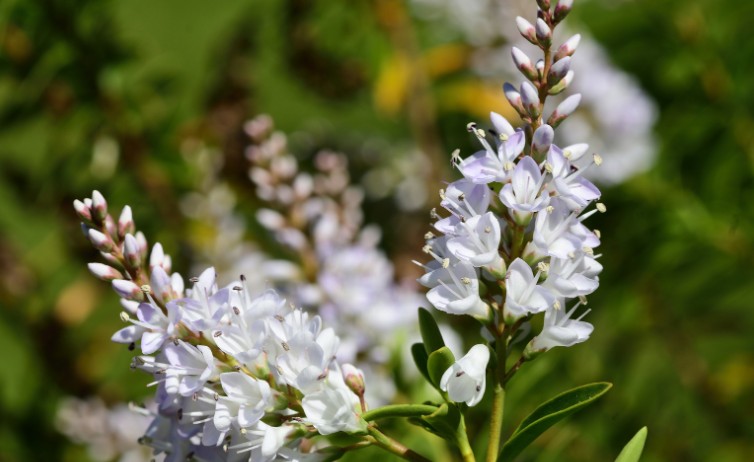
How Is the Small, Medium, and Large Hebes Looks?
I’ve found that size isn’t just about height — it’s also about how much space each variety takes up.
- Dwarf hebes are ideal for edging or rockeries.
- Medium-sized hebes work well in mixed borders or containers.
- Larger types provide background structure and look great in informal hedges.
Do Hebes Grow Tall or Stay Bushy?
Hebes are naturally mounded or rounded in shape, and most varieties tend to grow outward as much as upward. I’ve never had a leggy or overly tall hebe — even the big ones tend to keep a pleasing, domed form with a bit of pruning.
How Is The Popular Hebes Varieties in Height, Spread, Growth Rate?
Here’s a handy comparison based on what I’ve grown and observed in UK gardens:
| Hebe Variety | Height (UK) | Spread | Growth Rate | Notes |
| Hebe ‘Red Edge’ | 40–60 cm | 60 cm | Slow | Great in containers or rockeries |
| Hebe ‘Heartbreaker’ | 50–75 cm | 75 cm | Moderate | Striking variegated foliage |
| Hebe ‘Great Orme’ | 1.5–2 m | 1.5 m | Fast | Fast-growing, needs space |
| Hebe ‘Midsummer Beauty’ | 1.8–2 m | 1.5 m | Fast | Flowers into autumn |
This chart is based on average growth in southern UK conditions, but in sheltered microclimates, they can occasionally grow even larger.
How Fast Do Hebes Grow?
In my garden, hebes are moderate to slow growers, depending on the variety.
- Dwarf types like ‘Red Edge’ take 3–5 years to reach full size.
- Larger types like ‘Great Orme’ can surprise you — I’ve had them grow nearly a metre in just two years with proper feeding and pruning.
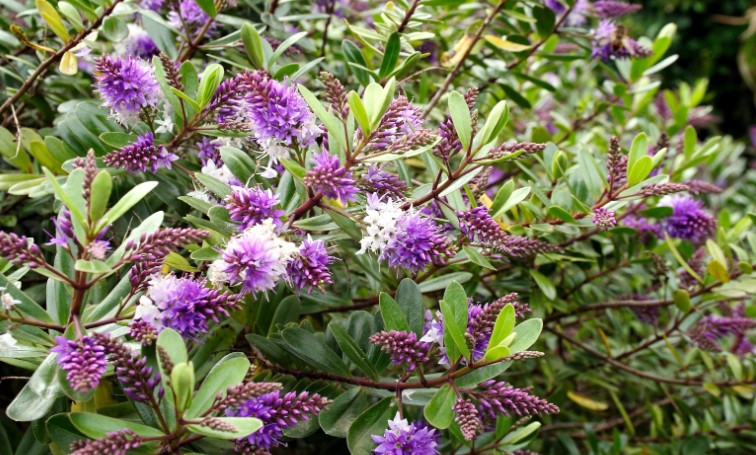
What Affects Hebe Growth Rate?
I’ve noticed a few key things that influence how quickly they fill out:
- Sunlight: Full sun encourages bushier, faster growth
- Soil In Lawn: Free-draining soil is crucial — they hate sitting in wet ground
- Feeding: A spring feed with slow-release fertiliser helps boost growth
- Pruning: Light trimming after flowering of hebes keeps them compact and vigorous
How I Choose the Right Hebe Size for My Space?
The size of the hebe is usually the first thing I consider when choosing one for a new planting area. Here’s how I match variety to space:
Is Hebes for Pots, Patios & Rockeries?
For small spaces or containers, I always go with:
- Hebe ‘Red Edge’
- Hebe ‘Baby Marie’
- Hebe ‘Caledonia’
These stay compact and don’t need much maintenance. I prune lightly each autumn to keep their shape.
Is Medium-Sized Hebes for Borders?
If I need something with a bit more height in the middle of a border, I use:
- Hebe ‘Heartbreaker’
- Hebe ‘Purple Shamrock’
- Hebe ‘Pascal’
They provide colour without overpowering nearby plants.
Is Taller Hebes for Structure or Hedging?
When I want height or a semi-formal edge to a pathway, I reach for:
- Hebe ‘Great Orme’
- Hebe ‘Midsummer Beauty’
These grow larger and work brilliantly when spaced out properly.
What Are Quick Sizing & Spacing Tips for Hebes?
When I plant hebes, I always keep spacing in mind to let them fill out naturally without overcrowding.
- Dwarf hebes: 30–40 cm apart
- Medium hebes: 50–70 cm apart
- Large hebes: 1–1.5 m apart
- In pots: Use a container that’s at least 30 cm wide
- Prune lightly after flowering to manage size
Spacing them properly also reduces disease and keeps airflow around the plants, especially important during wet British summers.
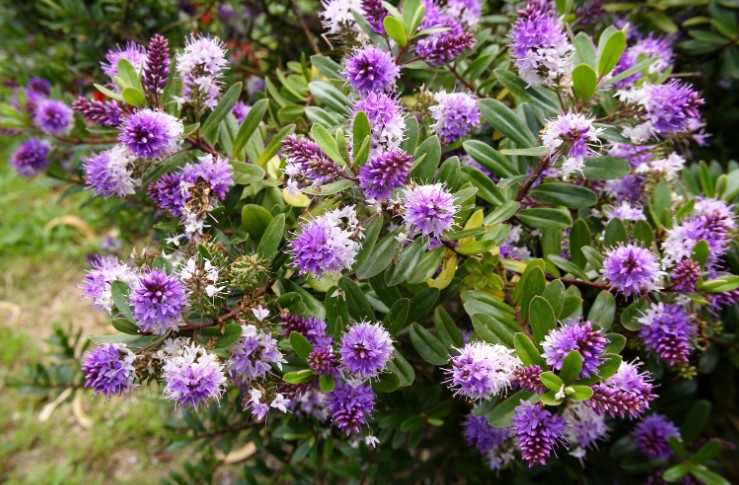
Can I Control How Big My Hebe Grows?
Absolutely — pruning is your best friend here.
I lightly prune my hebes once a year, right after flowering. This keeps them tidy and stops them from getting too woody or leggy. It also encourages fresh growth and more compact shape.
How I Prune to Control Size?
- I remove around 10–15% of the plant’s growth after flowering.
- For larger varieties, I cut back up to 30 cm, but never into old wood.
- I avoid cutting hebes in winter or early spring — they don’t bounce back well in cold weather.
Get to know about do hebes die back in winter with this guide.
Final Thoughts: Big or Small, Hebes Always Fit the Garden
Whether you’re working with a balcony or a back garden, there’s a hebe for your space. Knowing how big hebes grow has helped me design smarter borders and avoid overcrowding. Their evergreen structure, low maintenance, and range of sizes make them an ideal shrub for UK gardens.
If you’re just getting started with hebes, my advice is to:
- Start with a compact variety in a pot
- Observe how it behaves over a year
- Then experiment with larger types if you have the room
They’re easygoing, look great year-round, and once established, they’ll quietly become one of your garden’s hardest-working shrubs.
Related Article: Daisy Like Flower: Top 10 Easy-Growing Plants for UK Climate
What Are The FAQs On How Big Do Hebes Grow?
1. Can I grow tall hebes in containers?
Yes, but choose a large, heavy pot, and be prepared to prune more often to control growth.
2. Do hebes grow more in width or height?
Most hebes grow in a rounded, mounding shape, so expect them to spread as much as they grow tall.
3. What’s the tallest hebe I can grow in the UK?
Varieties like ‘Midsummer Beauty’ or ‘Great Orme’ can grow over 2 metres tall in mild UK climates.
4. How far apart should I plant hebes for a hedge?
For a loose, informal hedge, I plant them 60–80 cm apart depending on the variety.

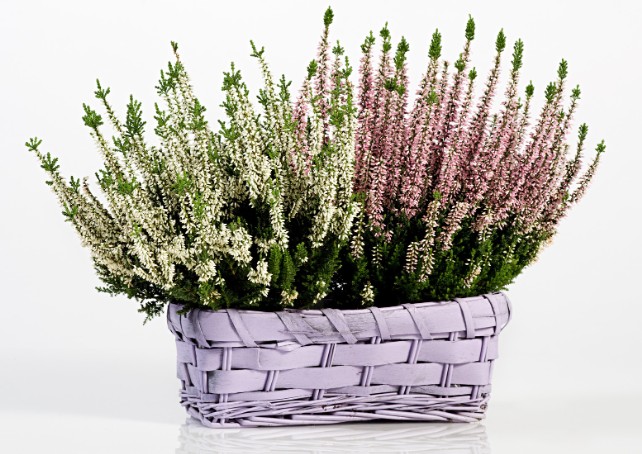
0 Comments